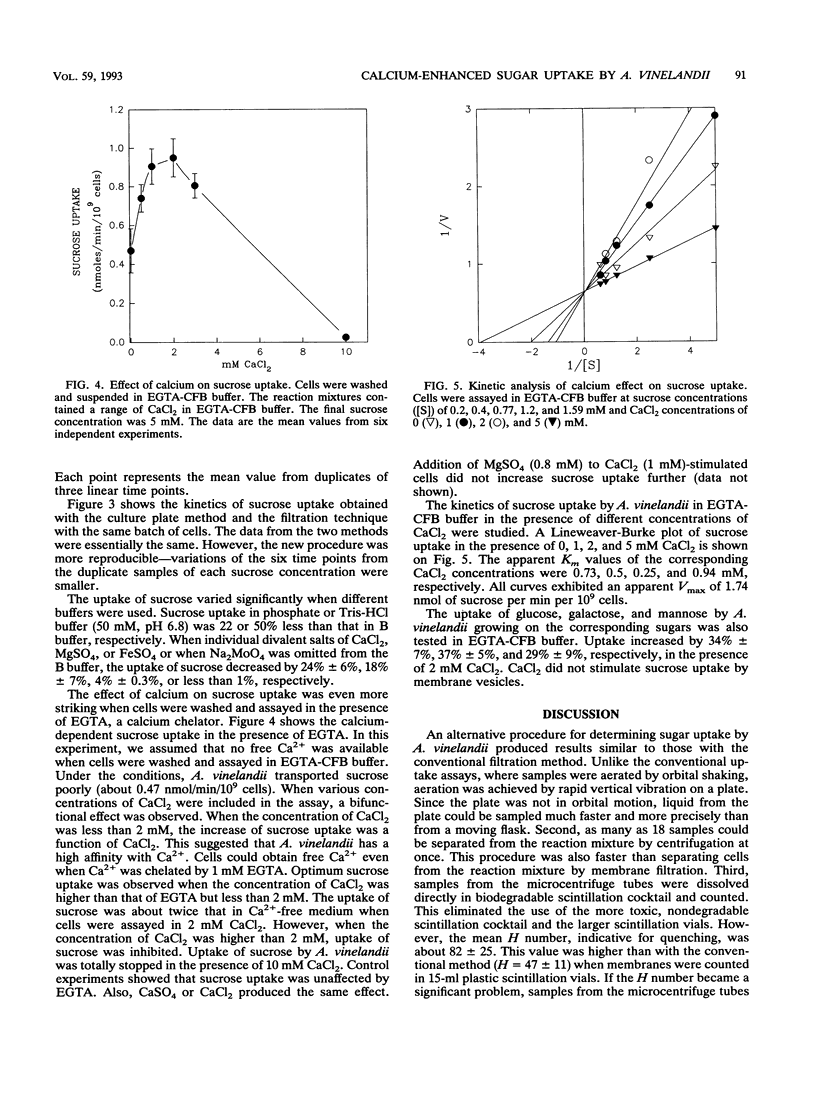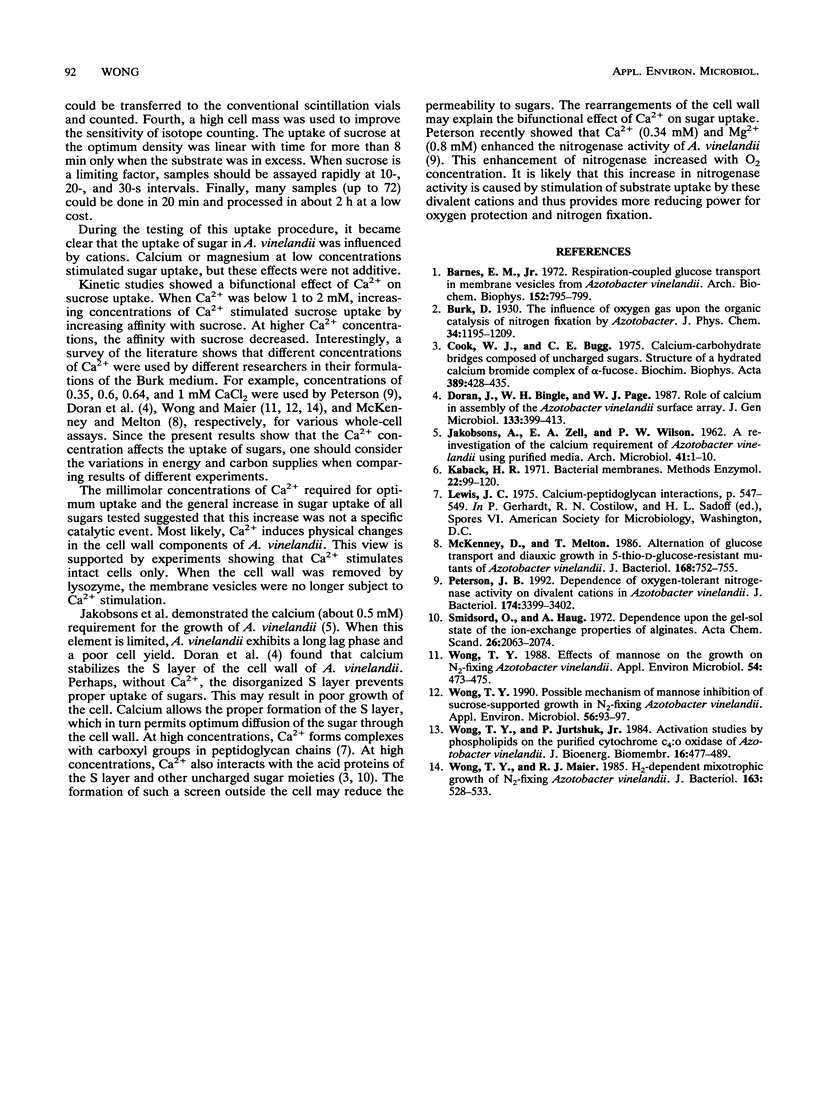Abstract
A fast and environmentally safe procedure was used to study sugar uptake by Azotobacter vinelandii. Transport experiments were performed in a 24-well plate and aerated by rapid oscillatory vibration. Samples were washed by centrifugation and dissolved in biodegradable scintillation cocktail for counting. At cell concentrations up to 6 × 108 cells per ml, the uptake of sucrose was a function of time and was proportional to the cell concentration. This modified uptake assay was used to test the effect of cations on sugar uptake in A. vinelandii. Results showed that Ca2+ at 1 to 2 mM stimulated sucrose uptake by decreasing the apparent Km of sucrose transport. Higher Ca2+ concentrations inhibited sucrose uptake in this organism.
Full text
PDF



Selected References
These references are in PubMed. This may not be the complete list of references from this article.
- Barnes E. M., Jr Respiration-coupled glucose transport in membrane vesicles from Azotobacter vinelandii. Arch Biochem Biophys. 1972 Oct;152(2):795–799. doi: 10.1016/0003-9861(72)90275-5. [DOI] [PubMed] [Google Scholar]
- Cook W. J., Bugg C. E. Calcium-carbohydrate bridges composed of uncharged sugars. Structure of a hydrated calcium bromide complex of alpha-fucose. Biochim Biophys Acta. 1975 May 21;389(3):428–435. doi: 10.1016/0005-2736(75)90153-4. [DOI] [PubMed] [Google Scholar]
- JAKOBSONS A., ZELL E. A., WILSON P. W. A re-investigation of the calcium requirement of azotobacter vinelandii using purified media. Arch Mikrobiol. 1962;41:1–10. doi: 10.1007/BF00408797. [DOI] [PubMed] [Google Scholar]
- McKenney D., Melton T. Alteration of glucose transport and diauxic growth in 5-thio-D-glucose-resistant mutants of Azotobacter vinelandii. J Bacteriol. 1986 Nov;168(2):752–755. doi: 10.1128/jb.168.2.752-755.1986. [DOI] [PMC free article] [PubMed] [Google Scholar]
- Peterson J. B. Dependence of oxygen-tolerant nitrogenase activity on divalent cations in Azotobacter vinelandii. J Bacteriol. 1992 May;174(10):3399–3402. doi: 10.1128/jb.174.10.3399-3402.1992. [DOI] [PMC free article] [PubMed] [Google Scholar]
- Smidsrod O., Haug A. Dependence upon the gel-sol state of the ion-exchange properties of alginates. Acta Chem Scand. 1972;26(5):2063–2074. doi: 10.3891/acta.chem.scand.26-2063. [DOI] [PubMed] [Google Scholar]
- Wong T. Y. Effects of Mannose on the Growth of N(2)-Fixing Azotobacter vinelandii. Appl Environ Microbiol. 1988 Feb;54(2):473–475. doi: 10.1128/aem.54.2.473-475.1988. [DOI] [PMC free article] [PubMed] [Google Scholar]
- Wong T. Y., Jurtshuk P., Jr Activation studies by phospholipids on the purified cytochrome c4:o oxidase of Azotobacter vinelandii. J Bioenerg Biomembr. 1984 Dec;16(5-6):477–489. doi: 10.1007/BF00743240. [DOI] [PubMed] [Google Scholar]
- Wong T. Y., Maier R. J. H2-dependent mixotrophic growth of N2-fixing Azotobacter vinelandii. J Bacteriol. 1985 Aug;163(2):528–533. doi: 10.1128/jb.163.2.528-533.1985. [DOI] [PMC free article] [PubMed] [Google Scholar]
- Wong T. Y. Possible mechanism of mannose inhibition of sucrose-supported growth in N2-fixing Azotobacter vinelandii. Appl Environ Microbiol. 1990 Jan;56(1):93–97. doi: 10.1128/aem.56.1.93-97.1990. [DOI] [PMC free article] [PubMed] [Google Scholar]


